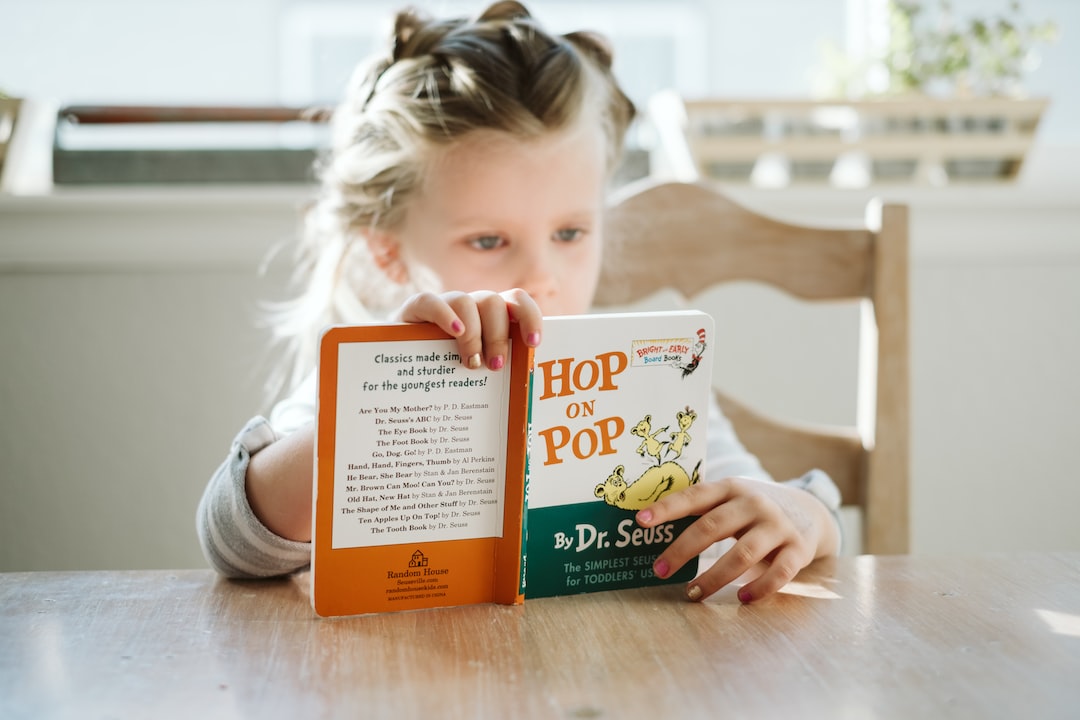Introduction
Table of Contents
Embarking on the adventure of mastering language arts can be an enriching quest, particularly when using literature as a vehicle for growth. The approach of learning language arts through literature does more than just build linguistic skills—it also nurtures a deep-seated appreciation for the beauty and cultural resonance of literary creations. This comprehensive discussion delves into the seamless blend of literature into language education and shines a light on the myriad advantages offered by such fusion. From considering its historical roots to examining practical strategies, this article will highlight how literature can be a powerful influence in the realm of language arts learning.
The Essence of Language Arts
Defining Language Arts
At the heart of education lies the cornerstone of language arts, which includes essential components like reading, writing, speaking, and listening. These elements are the pillars of effective communication and understanding. They work in harmony to empower not only language acquisition but also the analysis, interpretation, and generation of ideas within a given language. Language arts transcends the basic mechanics of communication by promoting critical reasoning, meaningful discussion, and the creative sharing of ideas.
The Role of Literature in Language Arts
Literature is a splendid conduit for the essence of language arts. It is a treasure trove of content that invites learners to immerse themselves in sophisticated language patterns, an array of vocabularies, and deep cultural contexts. As learners traverse various stories and prose styles, they are introduced to new linguistic challenges and opportunities for personal enrichment. Literature is not merely a part of language arts; it breathes life into it, presenting language in its highest form and forging emotional connections that make learning more significant and intimate.

Historical Context of Literature in Language Education
Traditional Methods of Teaching Language Arts
In the past, language arts instruction was often dictated by traditional teaching methods, which put heavy emphasis on rote memorization, rigid grammar exercises, and intensive practice. These techniques prioritized language precision over the ability to communicate effectively, sidelining learners’ emotional and intellectual engagement. Despite their effectiveness in teaching language basics, such approaches often stifled learners’ creativity and expressive potential.
Evolution Towards Literature-Based Approaches
The shift in language education toward using literature is marked and significant, acknowledging the need for a comprehensive, student-focused pedagogy. Through the adoption of literature in the classroom, teaching strategies have evolved to encompass the full spectrum of language—not just its form but also the substance and context that make language meaningful. This transition favors a richer, more connected educational experience.
Benefits of Literature-Based Language Learning
Enhancing Reading Comprehension
The power of literature to enhance reading comprehension is unmatched. It challenges learners with intricate story arcs, introduces them to metaphorical expressions, and calls for involvement with complex characters and storylines. This deep literary engagement fortifies learners’ interpretive abilities, sharpening their skills in deciphering and evaluating text.
Developing Critical Thinking Skills
The development of critical thinking—analyzing, synthesizing, and assessing information—is vastly improved through learning language arts through literature. Literary works often present intricate ethical conundrums, thematic depth, and societal issues that push learners to delve into critical analysis, thereby fostering advanced cognitive abilities across all learning spectrums.
Expanding Vocabulary and Language Mastery
Exposure to a sweeping variety of words and linguistic styles in literature is unparalleled. Learners not only come across new terminologies but also experience them embedded in rich context, which is essential for grasping their meanings and nuances. Such deep immersion in the language propels learners towards eloquence and proficiency in their communication.

Choosing the Right Literature
Selecting Age-Appropriate Texts
Finding the right literary works for learners involves a delicate balance, taking into account their age, developmental level, and reading proficiency. Age-suitable literature provides just the right level of challenge to promote learning while avoiding frustration or a lack of interest, critical for encouraging a long-term enjoyment of literature.
Diversity in Literature for Broad Perspectives
Incorporating a diverse selection of literary voices and viewpoints is crucial. Experiencing different cultural, historical, and social contexts does not only widen a learner’s perspective; it also cultivates empathy and international consciousness. Diverse literature is an instrumental tool in shaping informed, culturally aware communicators within the framework of language arts.
Methodologies for Integrating Literature
Read-Aloud Sessions and Discussions
Utilizing read-aloud sessions followed by rich discussions is an effective way to involve learners with literature. This approach serves to demonstrate fluent reading, exposes learners to the melody and emphasis of language, and provides a setting for layered interpretations and insights, bolstering the communal aspect of language education.
Thematic Units and Project-Based Learning
Organizing curriculum around literary themes or projects maximizes the potential for contextual learning. Through immersive thematic units and project-based activities, students dive deeper into literary works, linking them to broader educational themes and using their language abilities in diverse, impactful ways.
Practical Activities for Effective Learning
Creative Writing Inspired by Literature
Inspiring creative writing exercises with literature as a springboard activates students’ imagination and motivates them to explore language creatively. Whether it’s through composing their narratives, poems, or dialogues, students actively engage with language, reinforcing the skills and knowledge they’ve accumulated.
Role-Playing and Dramatization of Texts
Bringing literature to life through role-play and dramatization invites students to inhabit characters, experiment with different speech forms, and practice language in a lively, authentic context. Such engaging activities foster a profound grasp of the text and enable learners to convey language nuances through actual enactment.
Literature Circles and Collaborative Learning
Literature circles encourage a cooperative learning environment where group discussions and varied text interpretations thrive. This shared learning model enhances community building, hones communication skills, and teaches learners to value an array of perspectives, thereby enriching their literary understanding and esteem.

Technology and Resources for Literature-Based Learning
Utilizing e-Books and Online Platforms
Today’s digital advancements have broadened the toolkit for literature-based language learning. E-books and online repositories make a wealth of literary materials readily accessible, allowing learners to delve into texts that may have been previously inaccessible. The added benefit of digital tools supports note-taking, referencing, and group study—further elevating the educational journey.
Creative Use of Multimedia and Interactive Tools
Today’s multimedia and interactive resources have transformed the literary experience in language learning settings. Ranging from audio editions to digital storytelling apps, these resources captivate learners through a variety of sensory channels, suit various learning preferences, and render the process of language acquisition more engaging and multifaceted.
Conclusion
The role of literature in the language-learning landscape is undoubtedly transformative. Engaging with literary works allows students to experience the full spectrum of language, hone their critical thinking and textual comprehension, and cultivate a deep love for the cultural and emotional layers of communication. This article has traversed various strategies and actionable steps for merging literature into language instruction, emphasizing that literature has the potential to enhance linguistic skill and ignite a lifelong passion for reading and the arts. As teachers and students continue to embrace the approaches to learning language arts through literature, they unlock a myriad of possibilities for a more profound and engaging education in language arts. The voyage through literature offers endless discovery and guarantees rewards for all who undertake it.
Frequently Asked Questions about Learning Language Arts Through Literature
- What is the significance of integrating literature into language arts education?
- Literature enriches language arts by exposing learners to complex language patterns, diverse vocabularies, and cultural contexts. This approach breathes life into language learning, making it more meaningful by forging emotional connections with the material.
- How has the approach to teaching language arts evolved historically?
- Language arts teaching has shifted from traditional methods focused on rote memorization to utilizing literature which fosters critical thinking, creativity, and a deeper engagement with the language.
- Can you list some benefits of learning language arts through literature?
- Absolutely, some benefits include enhanced reading comprehension, development of critical thinking skills, and expansion of vocabulary and language mastery. Literature provides a rich context that helps learners connect more deeply with the language.
- What strategies are useful for effectively integrating literature into language learning?
- Strategies such as read-aloud sessions, thematic units, creative writing inspired by literature, role-playing, and literature circles are effective. These methods promote active engagement and deeper understanding of language.
- Are there recommended types of literature that should be used in language arts education?
- Selecting age-appropriate and culturally diverse literary works is essential. The right literature should challenge learners appropriately while also introducing them to various perspectives and voices, broadening their understanding.
Please note the use of `
- `, `
- `, and `
- ` tags to create a definition list structure for the frequently asked questions and their corresponding answers. This format provides a clean and organized layout for FAQ sections, making it user-friendly.